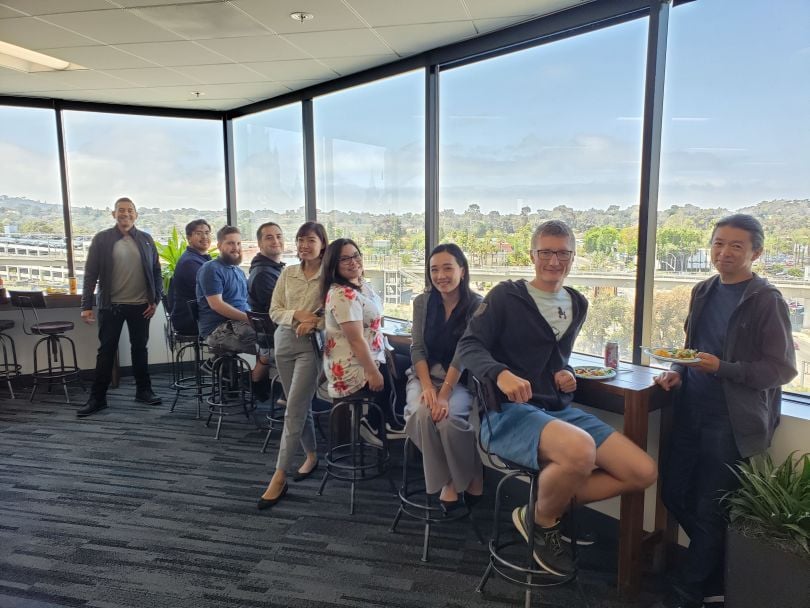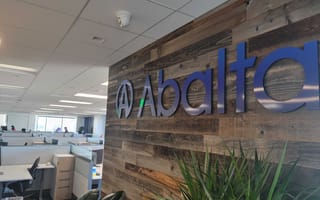A decade ago, smartphones were still vying with their mobile phone predecessors to capture market share. Tech journalists were rhapsodizing about the iPhone 5. And the CD, despite its waning popularity, was still the preeminent form of car entertainment. It would still be years of FM radio transmitters, cassette adaptors and aux cables before most people could come to expect seamless in-car audio integration — much less streaming video, GPS, weather updates, restaurant recommendations and more.
It was around a decade ago, though, that Abalta Technologies Chief Technology Officer Pavel Stankoulov first began to work on what would become Abalta’s flagship product WebLink. WebLink leveraged the increasingly impressive computing power of a smartphone and allowed drivers to project and control applications from their in-vehicle screens. These drivers would no longer be tethered to the extremely weak computing power of their in-car entertainment systems; they would be able to employ mobile and cloud computing power to make their unimpressive in-car entertainment luxe.
“At that time, many mass market vehicles used low-end hardware for their infotainment systems and didn’t offer cloud connectivity,” Stankoulov said. “With WebLink, we were able to target real low-end hardware and make it look like a high-end car. From the end user’s point of view, it looks like they are interacting with the in-vehicle system, but in reality everything is happening on the phone.”
In the ensuing years, Stankoulov noted, not much has changed with regard to in-car infotainment systems. Hardware and software still lags well behind those in smartphones, and WebLink’s solutions have proven to be enduringly useful as the product continues to evolve and meet the needs of customers. Though Stankoulov was the originator of the idea behind WebLink and holds several patents related to the technology, he credits the Abalta team — past and present — with the product’s success.
“The implementation of the idea would have not been possible without the amazing Abalta team,” Stankoulov said. “The current team comes up with new features and extends the product to meet the customer’s needs.”
In his role as CTO, Stankoulov leads that team and its engineering efforts — with a focus on research and development and information security. He works to foster a sense of open collaboration and encourage engineers to take initiative, advance their careers and improve their skills.
“Everyone in the company is encouraged to participate in product ideation, whether it is a new product idea or a solution or improvement,” Stankoulov said. “New employees will have the opportunity to work on different projects and learn and experience new technologies. People who want to take leadership positions are encouraged to do so and help us build a strong company culture.”

How would you describe the vision behind the way you lead your team?
Our team consists of highly-skilled engineers. We are proud of the high standard and selectiveness of our hiring process. This allows us to successfully tackle difficult projects.
We have created a friendly working environment. We discourage politics and finger-pointing. We encourage constant improvement of our team members. This not only helps with team members’ day-to-day projects but helps with their career growth. We provide training and various events to help people try new technologies and challenge themselves.
What tools and support do you offer to allow them to stretch their skills?
Career growth and constant improvement are very important for the company. We offer weekly developer’s workshops that span two hours and cover different technologies and topics.
The topic could be technology that we are currently using in a project or a completely new technology that we might use in the future. We recently finished training in the Rust programming language. Now we are doing workshops on Go. All these workshops are held on company paid time and are voluntary. Anyone who is interested in the topics can join.

How do you build team culture?
We have different teams working on various projects for different customers. We are also distributed geographically with few multiple office locations in the U.S., and we have a development office in Sofia, Bulgaria. We work in a hybrid mode where many people work from home. All this makes it challenging to have cross-team interactions.
“No matter the tools or the methodology, the product would have not been successful without a great team.”
To overcome this and build a strong company culture, we have various team events such as all-hands meetings, parties, lunches, games and more. We host internal hackathons at least once per year. Anyone can sign up and work with other team members on interesting product ideas. We also hold “demo day” events at least twice a year. During these events, people show the projects that they are working on to the rest of the company. This gives the opportunity to the rest of the team to understand what others are working on, ask questions, offer suggestions, etc.
What are some of the obstacles that your team has encountered when developing and improving WebLink? How have you successfully overcome some of those obstacles?
One of the biggest challenges with WebLink is that the core engine runs on the smartphone, so we depend on low-level functionality of iOS and Android. WebLink uses the smartphone in a nontraditional way and often the APIs that we use change, and we must adapt to those changes. This means working with earlier releases of the mobile operating systems and trying to find workarounds for the changes that are outside of our control.
These difficulties are amplified by the fact that we must maintain backward compatibility. The in-vehicle software often cannot be modified. This creates a challenge to move our software forward while maintaining backward compatibility.
Evolving with the Technology
What strategies does Abalta employ to ensure that cross-functional collaboration went smoothly?
From the beginning, we employed Agile methodology. And although Agile has its challenges and is not a silver bullet, we customized it to our needs and made it work. The daily syncs, sprint planning meetings, retrospections and demos all helped the various stakeholders and teams to be on the same page.
We have also used various collaboration tools that help us bridge the distance and time zone differences — such as Jira for our task management and bug-tracking and Slack for communication.
No matter the tools or the methodology, the product would have not been successful without a great team. It comes down to individual members stepping up and giving their best.
What are some of the exciting things that your team is currently working on with your team?
I am always excited about working on Abalta’s products because they cover multiple systems and technologies, such as in-vehicle systems; smart devices like smartphones, smartwatches and tablets; and cloud services. This makes architecture challenging and requires understanding of different types of technologies and systems. This also necessitates a strong information security design.
While the technologies on the automotive side are more conservative due to the hardware, cost, security and safety considerations, the technologies on the cloud and smartphones are moving much faster. Integrating and implementing the communication mechanisms between such systems is quite interesting. Automotive systems are often underpowered, and some of the computations can be moved to the user’s smartphone. Sometimes the computation cannot be moved to the smartphone or the cloud, and then we must implement a very efficient embedded algorithm. These are all very interesting technical challenges that make the work exciting.






